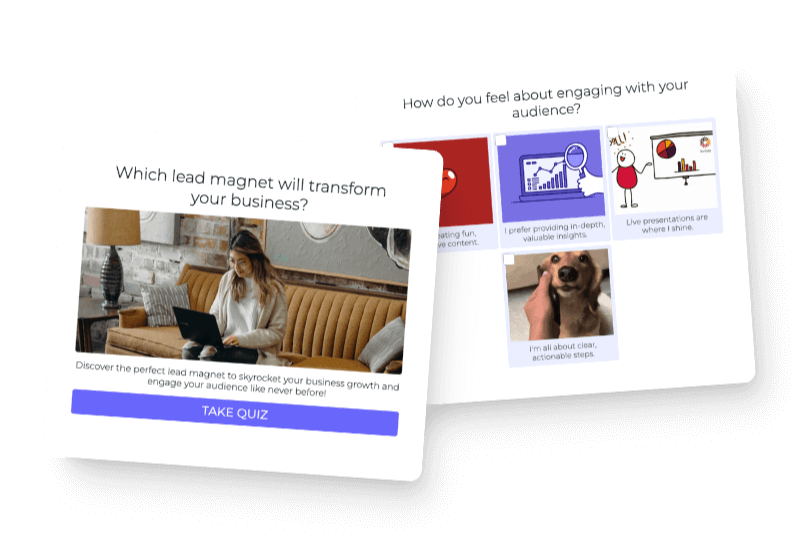Interact has a portfolio of quizzes we create using our own platform to test the engagement rate of quizzes. We publish them publicly, they cover every industry.
The average number of events per view is 3.56 when a quiz is embedded prominently on a page, according to Interact’s internal Google Analytics data.
Here is a screenshot of the data showing the breakdown. There were 46,919 views and 167,782 events. Events are triggered when someone interacts with the quiz that’s on the page, so clicks the “Take Quiz” button, answers a question, or proceeds through the quiz.

This is from June 1 – June 30, 2025. Fresh data, even in the age of AI search, interactive content pages are performing exceptionally well. These quizzes aren’t even relevant to our domain or what we do as a company.
We are a software for creating quizzes, not a website where you take quizzes, but we created these quizzes using our own software to test how they work. And they work incredibly well.
But it’s not just us. One of our clients, Gretchen Rubin, has created a portfolio of quizzes on her website, and they are a top 10 drive of discoverability through search.
This just makes sense. According to Google “Google’s core ranking systems look to reward content that provides a good page experience.” And the data from Interact shows that quizzes are a good experience, with an average engagement rate of 3.56 events per view.

How do I set up quiz pages on my site for SEO discoverability?
Here’s a guide on how an ideal quiz page is set up. Of course most quiz pages look different (and better than my sorry mockup). But the general premise is there.
- URL: Yoursite.com/quiz-title. Make a page on your website with a simple URL that is the title of your quiz or s shortened version of the title.
- Quiz Title: At the top of the page, make the H1 of the page the title of your quiz.
- Quiz Description (25 words): Just below the title, write the description of your quiz that contains any important keywords for search engines.
- Quiz Embed (Javascript): Embed the quiz into the page, it can start with the cover page, or you can turn off the cover page if you want the first question to show first. You can experiment with that to see what gets highest engagement.
- Content Sections (Include at least two): Below, or above, the quiz embed, include at least two sections of content. These are more for SEO, since search engines don’t necessarily read interactive elements. These can include:
- About the quiz
- Instructions for the quiz
- About the author
- Overview of quiz outcomes
- Make your own – this can be research around the quiz, a full post related to the quiz, anything that makes sense on the page.

What about quizzes with AI search?
In speaking with customers who use both AI chatbots on their sites and quizzes on their sites, there is a differentiation to when each is most useful. Chatbots are better when there is no clear answer to the user’s intent, and a conversation is needed. Quizzes are better when there is a clear answer to the user’s intent, and you just need to use a set logic system to help the user find their answer.
For a hypothetical, let’s look at a scenario. Say a user is thinking about a security strategy for their company.
A chatbot would be best to have a broad conversation about company security guidelines, if you know your users are just getting started and have no idea where to begin.
A quiz would be best if the user already has some grasp of company security, and needs to assess where they are at, then get specific next steps.
So the chatbot is better for answering the “blank page” problem of just getting started, and the quiz is better for moving things forward once someone has already begun. This can vary by scenario, but in general, when specific information is already known by the user, a quiz is better because you can eliminate back-and-forth and guide them to their answer. When very little to no information is known by the user, a chatbot is better because it can provide information and broad context to the user.
Build Your Interactive Quiz Content Strategy
I co-founded Interact in 2013 to be a software that makes it easy for content marketers to create and embed Interactive quizzes. This was after we personally saw the engaging power of quizzes and realized it was an untapped opportunity for businesses. Today our quiz platform is trusted by companies like NASA, Atlassian, NRG Group, and The Natural History Museum. If you are thinking about implementing interactive quizzes into your content approach, you can sign up free for Interact and test it out. Or book a demo and myself or someone on my team will chat with you about implementing quizzes into your content approach.
